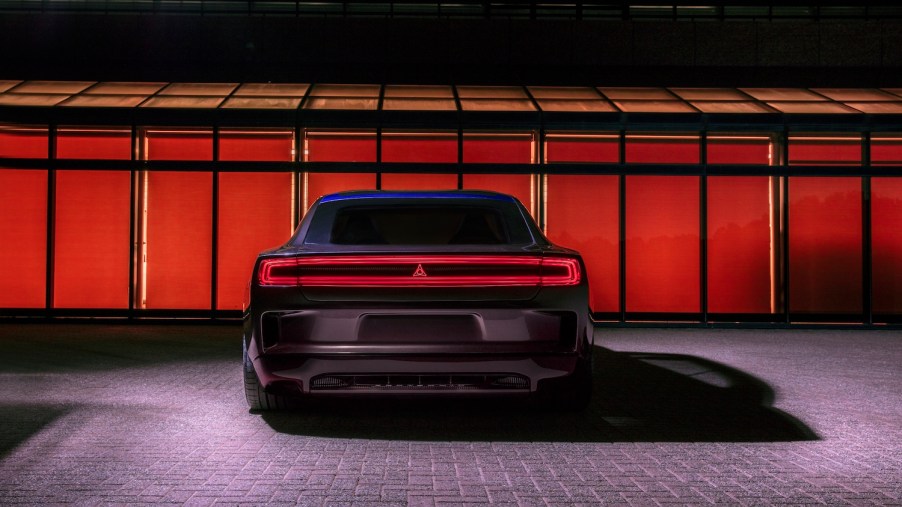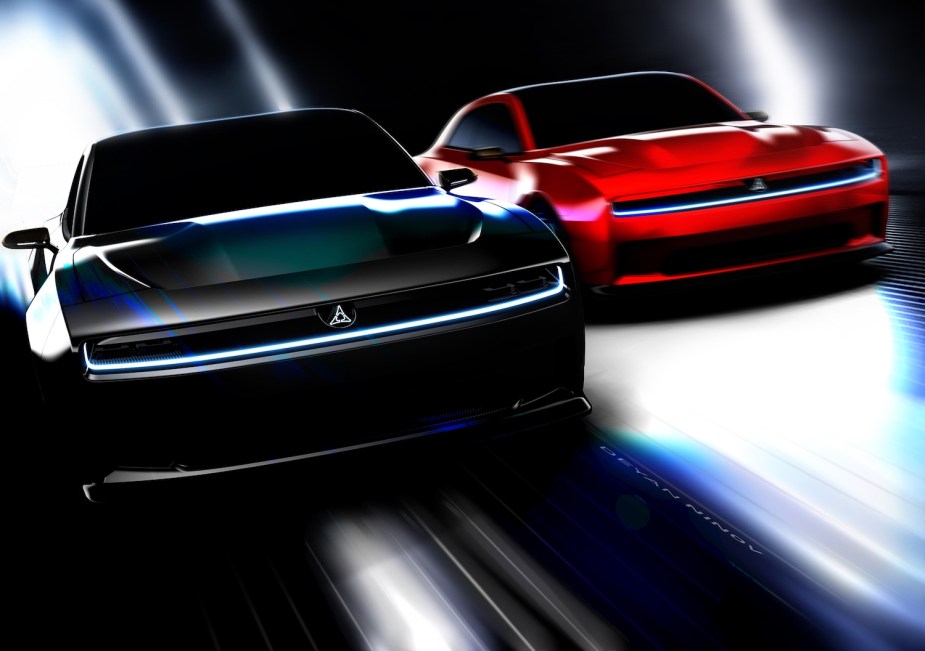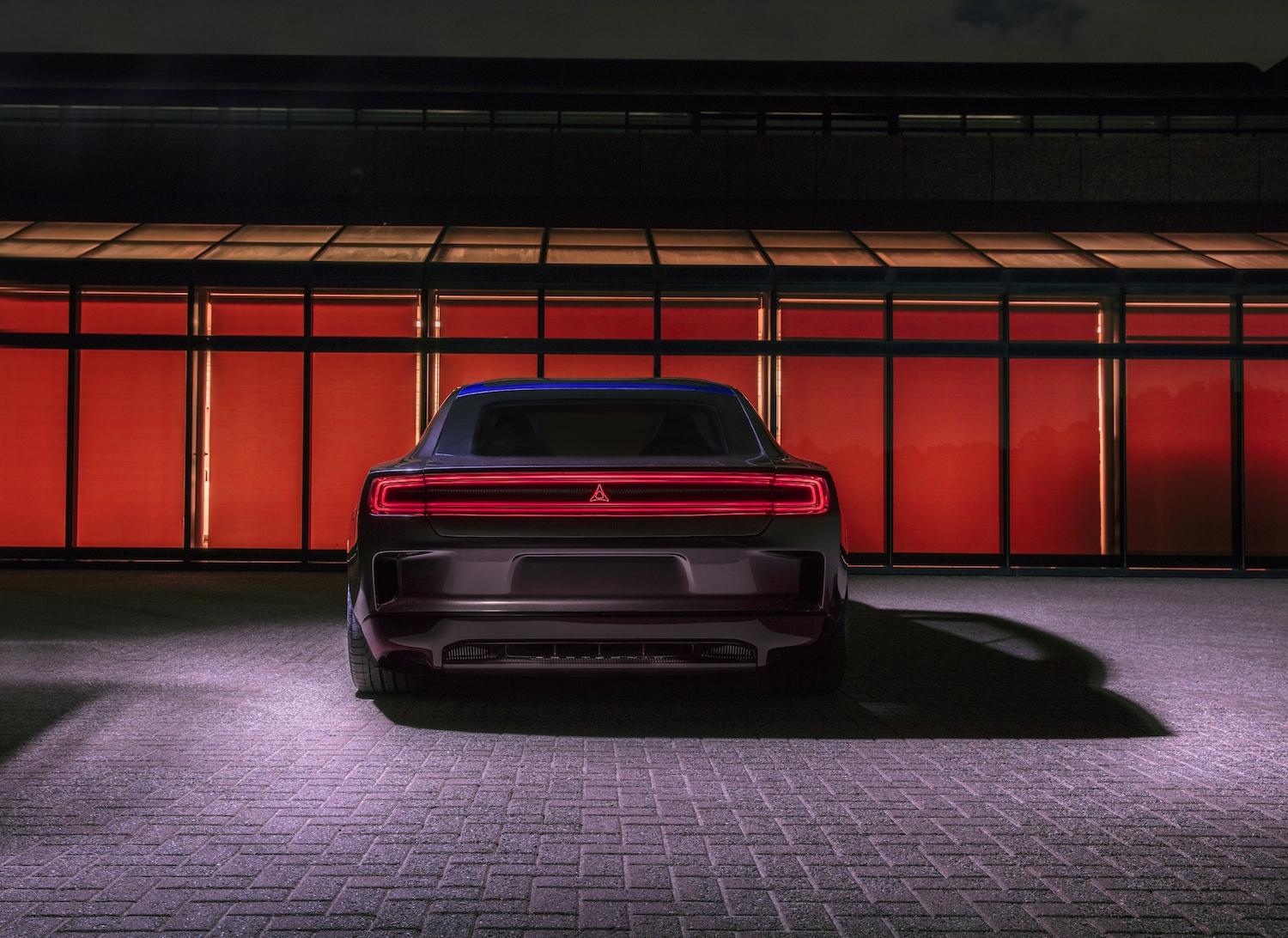
Here’s the Real Reason People Will Laugh at the Dodge Charger Daytona’s ‘Fratzonic Chambered Exhaust’ Noisemaker
Dodge has finally rolled out its first eMuscle concept car: the Dodge Charger Daytona EV. There’s a lot to love about this new electric sedan. It has great looks, several unique new features, and the SRT Banshee powertrain promises even more power than the outgoing Hellcat. But many of us motorheads find the ‘Fratzonic Exhaust’ system–with its subwoofer and resonating chamber piping out engine noises–to be laughable. Future EVs certainly don’t need to be silent. But artificial engine noises are as embarrassing as slapping on vents or spoilers that offer no real performance benefit.
The Dodge Charger Daytona previews a bright future for electric performance

Many electric car startups–such as Tesla and Lucid–are building electric supercars with very similar styles. Their future is full of clean lines and refined performance. But it’s far from the only possible future for the automobile. This is why I always applaud unique concepts, such as the Tesla Cybertruck, Bollinger’s 4x4s, the Mercedes-Maybach Vision, or Alpha Motors‘ retro-futuristic EVs.
The Charger Daytona offers a possible EV future built upon the style of American muscle. Its functional front “R-wing” raises its hoodline to internal combustion levels, making room for a large, open grille. Its fastback coupe design is both functional and timeless. Dodge has even engineered a pistol-grip shift lever (likely to control driving modes) it’s calling the eRupt.
Stellantis (Dodge’s parent company) is also promising one of the first 800-volt powertrains with the SRT Banshee version of the Charger Daytona. You can even order the car with drag tires from Dodge’s Direct Connection Dealers. It seems that the SRT Banshee badge–and drivetrain–will be available across multiple models, just like the Hellcat before it. If our electric future will look anything like the Charger Daytona, I am looking forward to it.
The Charger Daytona’s ‘Fratzonic chambered exhaust system’ is just a noisemaker

Along with dozens of exciting features, Dodge announced a new “Fratzonic chambered exhaust system.” Not only is the automaker being glib about what exactly this system is, but its very name is a mouthful. I’ll break it down for you.
Firstly, the Fratzog is a three-pointed star and a classic Dodge logo from the 1960s. As the proud owner of a ’64 Dodge Dart, this emblem is near-and-dear to my heart, so I’m thrilled to see Dodge bring it back for all future electric vehicles. Thus, “Fratzonic” is a combination of “Fratzog” and “sonic.”
What is this system “exhausting” in a car with no internal combustion? Dodge says its exhausting “performance noises.” That sounds exhausting, indeed. You’re probably curious what in the Hellcat it will sound like, so here’s a preview of the Fratzonic “Vroom” noises in the video below:
How does the Charger Daytona make these noises? The actually “Fratzonic exhaust” outlet is a wide trumpet-like opening in the rear bumper. It has been carefully engineered to amplify the noises generated by the regular speaker inside. How do I know? Because Dodge is bragging about how many window-rattling decibels you’ll be able to unleash with your right foot: 126 to be exact. That’s apparently important because it’s more than a Hellcat.
Performance-imitating features always feel false

It might appear that Dodge is off the map as it engineers a noisemaker for its Charger Daytona EV. But this territory is not as uncharted as it seems. These Fratzonic noises are engineered to remind us of high-performance internal combustion cars–with an electric twist. And the reasoning behind them is similar to cars with imitation performance features, such as useless rear spoilers or aerodynamic vents which are actually just stickers.
Whenever an automaker releases a car with useless aero elements, most enthusiasts make fun of it. Some fake aero elements look very cool, but it doesn’t matter. Stick on fake aero elements always gives a vehicle a “trying to hard” personality. And the truth is, the coolest cars in history were usually under-designed because they had nothing to prove.
Another example are the tow loops many classic JDM sports car owners install on their bumpers. Sure, they look like the hooks on the incredible Japanese-built factory race cars of the 80s and 90s. But the cheapest, non-functional ones on otherwise stock cars rightfully earn ridicule from other car enthusiasts. They are the equivalent of installing a non-working winch or off-road lights on a stock SUV.
There are good alternatives to the Fratzonic chambered exhaust system. When Richard Hammond first drove the Rimac electric supercar he gushed about the noises it made. He admitted he had to get used to an entire new palette of performance noises. But the gear whine at high speeds was there. In addition, EV startups have begun experimenting with amplifying electric buzzes and crackles that their vehicles already make.
Dodge has done a masterful job designing an advanced EV that is visually reminiscent of the past. This is unsurprising, as its Charger and Challenger were always among the most retro-looking modern muscle cars. In addition, its powerful drivetrain and unique manual shifter will set it apart from the growing pack of competition. I only hope it can lean on the retro elements of the Charger Daytona in the production version and let go of the elements that cling uselessly to the past–such as the Fratzonic exhaust chambered noisemaker.
Next, watch CNBC’s deep dive on the Charger EV in the video below or read why the perfect name for the production version is Dodge 880.



